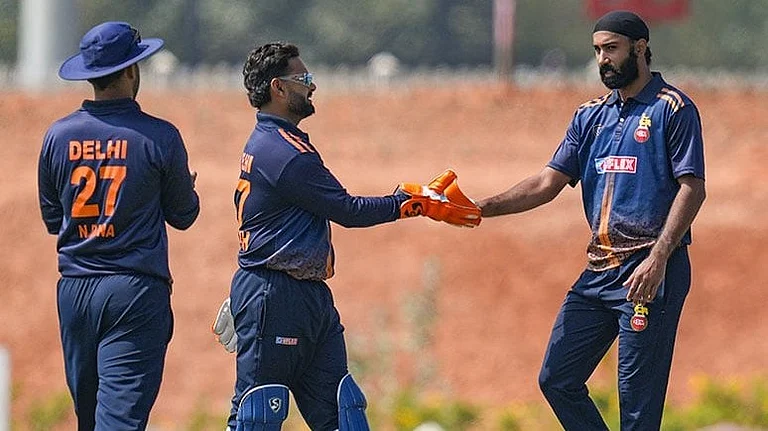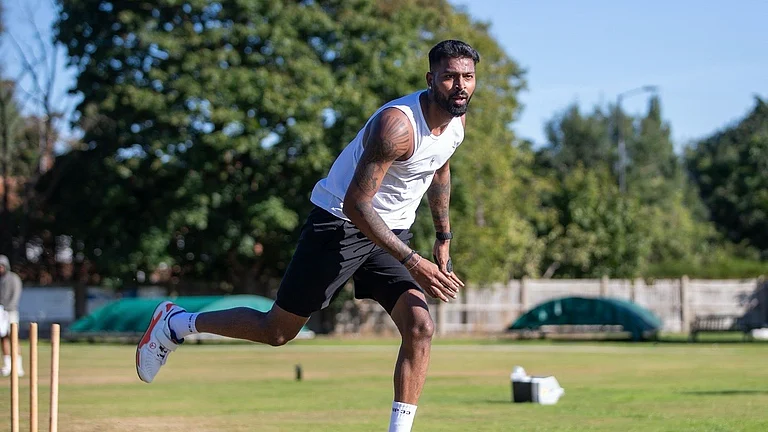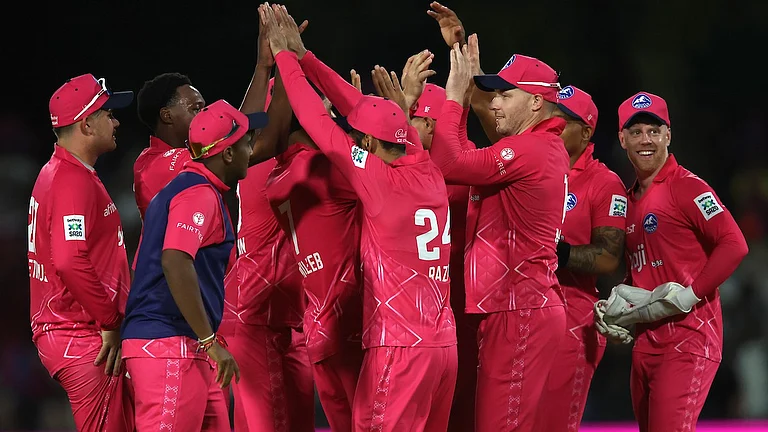It took Palak Gupta less than five years since she started out as a model in 2015 to become a well-known name in the fashion industry. Having walked the ramp and shot for several top Indian designers, including Tarun Tahiliani, Rahul Mishra and Falguni Shane Peacock, she was riding high on her success—until the Covid-19 pandemic struck. As she struggled to find work during the lockdown, and affording rent and other expenses became a challenge, she had to move back from Mumbai to her parents’ home in Delhi. “Mostly there was no work, and when there was, the rates had been slashed,” says Gupta, who has also shot for international labels like Emporio Armani and Massimo Dutti. “We were getting only 30 per cent of what we used to. At home, I could work for less and at least make some pocket money.”
Not all her colleagues, however, had a support system to fall back on, Gupta points out. Being on one of the lowest rungs of the fashion industry’s metaphorical ladder, models not just faced a heavy setback, but unlike others they didn’t even have any associations and fraternities to turn to. “There’s no association or community to look out for us. Fashion designers had the FDCI (Fashion Design Council of India), but there was no one to help us when there were no jobs,” Gupta says.
“The modelling industry had almost closed down,” says Om Pawar of Mumbai-based talent agency Purple Thoughts. With no gatherings allowed, outdoor shoots were a big no, and the number of monthly and yearly gigs shrank, forcing many like Gupta to move back to their hometowns. “May and June this year were the worst,” says Kavita Parwani, owner of Aelanz Models, a Delhi-based modelling agency. “Many models were the sole earning members in their families. I got 8-10 calls every day from models asking for work, even if the payment was just Rs 2,000.”
The industry tried to make the best of whatever they had, and a major outcome of this exploration was discovering the online medium as a business platform. If industry stakeholders are to be believed, this discovery will outlive the pandemic. “The pandemic forced people to go online and improve their social media presence. It also made brands and designers tap the influencer market,” says Pawar.
With the traditional form of shoots, including print campaigns, taking a back seat, e-commerce shoots for brands and lookbooks for designers increased for them to keep their social media pages updated. “Before Covid, designers would shoot two to three times a year for their lookbooks, but since the pandemic, shoots have doubled. Social media, especially Instagram, is now a big thing. We have clients seeking out models with 10k, 20k followers,” says Pawar.
“Online emerged as an alternative platform for models during the pandemic, and now this is trending,” adds Parwani. According to Vimal Hari, director of Crizaze, a Chennai-based modelling agency, with the success of hybrid formats—both physical and online, as in case of the Lakme Fashion Week this year—the industry is likely to hold on to it even in the post-pandemic world. “The online format did exist before the pandemic, but there wasn’t much awareness. Now that there has been a rise in revenues through direct marketing online via micro-influencers, the format will continue being part of the industry,” says Hari.
The online medium also allowed models to stop depending on agencies or designers. Muskan Raj, who began her career in the middle of the pandemic, used to do small shoots with make-up artists, before she realised she could find work directly through her Instagram page. “I started making reels and posting pictures on my Instagram page, and clients began contacting me for work,” she says.
Saloni Khanna, who gave up her corporate job to become a model in 2016, found a new direction as the industry started transitioning to online, and became an actor. “I have mostly been doing web shows,” she says. “Online was like a new door. We did everything online…from photoshoots and readings, to pre-production. Had it not been for this medium, everything would have come to a standstill.”
We Are The World
Transgenders, dark-skinned, plus-sized models...The fashion world has never been more inclusive.
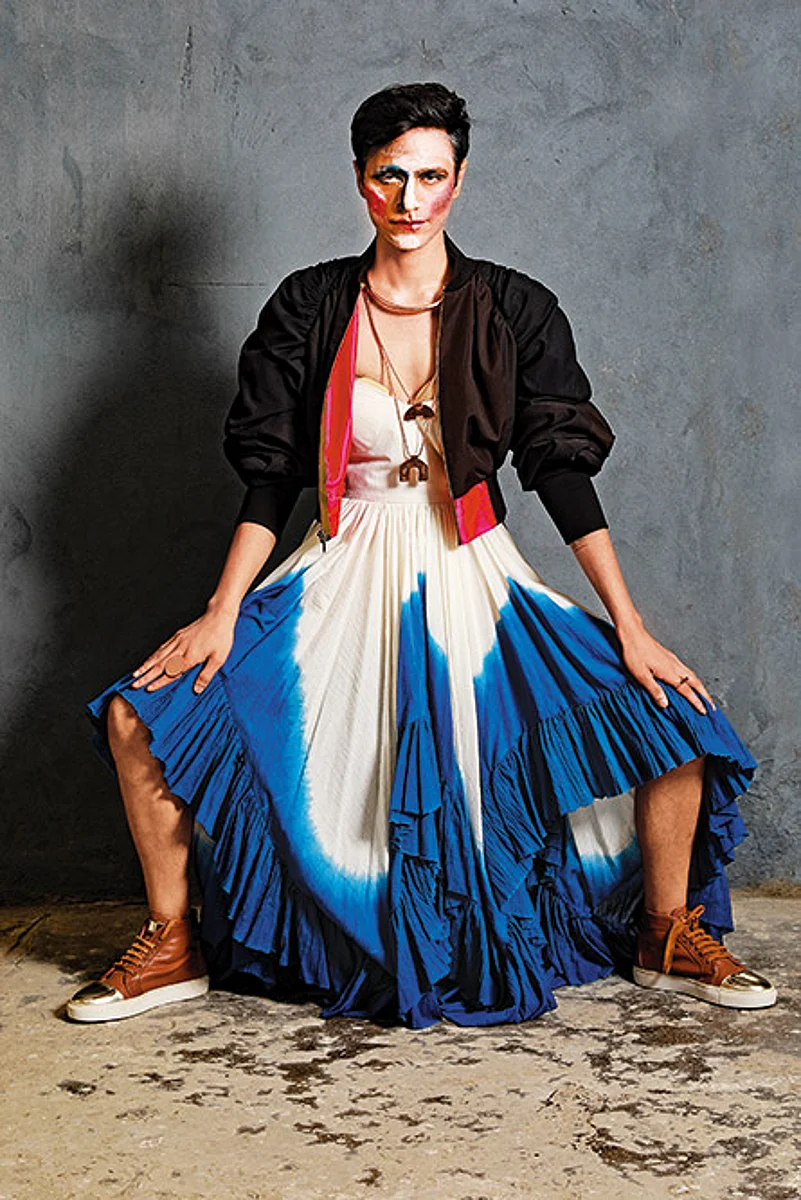
Jacket: Arjun Saluja, Dress/Accessories: Samant Chauhan, Hair/Makeup: Dinky Maggo
Nitish Anand aka Shabnam Bewafa Drag queen and LGBTQ activist, Delhi
My journey as a drag queen started when I gave my board exams. A few friends asked me to dress up as a girl for the Pride parade. I found dressing up as a girl to be a great way to celebrate the femininity in me. When I started going to college, I disguised myself as a female again. At a club called Kitty Su, I bumped into the owner, Keshav Suri. He felt it took a lot of courage to go out in public dressed as a woman and asked me to perform. And I realised I was very comfortable being who I was.
ALSO READ: Wanted! A Desi Model For Fashion Education
I called myself ‘Shabnam Bewafa’. Shabnam was a teacher in my school. As for ‘Bewafa’, when I was having a tough time with my lover, he used to call me that. Instead of feeling sorry for myself, I made it my brand name. It was a tight slap on his face that I turned the word into something so beautiful. That’s how my journey started in 2017.
I took inspiration from all the women in my life. I lost my mother when I was five. I remember when I shaved my beard and applied makeup for the first time, I saw her reflection in the mirror. I had a girlfriend during my school days and that was my biggest mistake. It taught me that I am 200 per cent gay. I used to tell myself I was different for a reason and that there is a bigger purpose to it. I am my own inspiration.
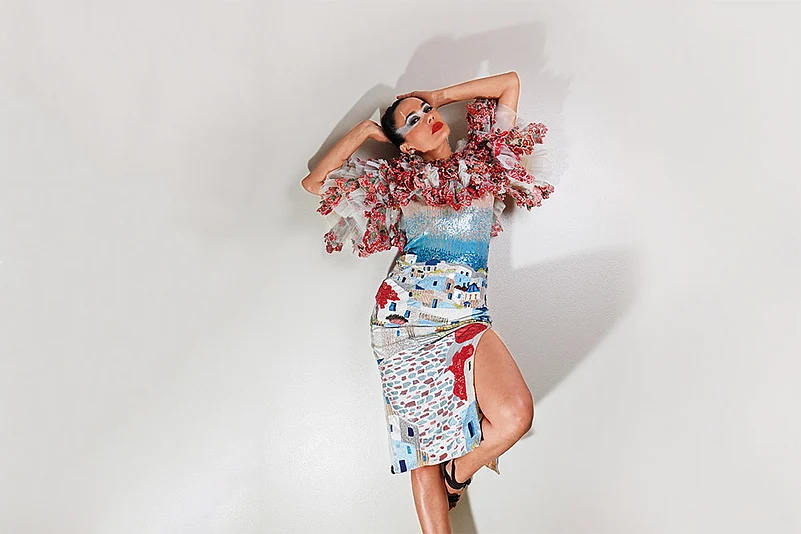
Outfit: Rahul Mishra, Hair/Makeup: Dinky Maggo
Sonalika Sahay Model, Delhi
The pandemic hit live fashion shows hard. Public gatherings were banned, budgets were cut, and a lot of models lost their livelihoods. There was a massive drop in the number of shows—at least 40 per cent in comparison to earlier—which continued post-pandemic. We’re limping back on track now.
The changes I now notice are that protocols for shows have changed. We’re getting ourselves tested. There’s huge focus on disinfecting everything—from seats to brushes. We’ve also come to value our work more. I see all my colleagues making extra effort in their work. Work has picked up, but there aren’t many solo shows as before, though bigger events like Lakme Fashion Week, and Heritage Fashion Week are on. Solo shows have actually shifted to virtual platforms, with video shoots filling in a lot of the gaps.
Modelling has been a learning experience. I lived in Singapore when I came to India and met Sushma Puri, who was running the Elite Model Management agency. She managed my profile for a couple of years, got me many good shows and brand endorsements in the beginning of my career. It helped me massively. That’s why I keep telling freshers to enter the industry through an agency, because it helps a lot in the initial years. Once people notice you, you just need to build your personal brand and work starts flowing.
If you are open to learning, you grow in life. Age is not important in this industry. What matters is how fit or how good you are on the ramp and in front of the camera. Although we’ve become quite inclusive, fitness matters, as every part of your body shows up on the ramp.
Earlier, we didn’t have so much social media, so we didn’t get the kind of exposure freshers get these days. As you grow in the industry, your confidence on camera or the ramp also grows.
Media pays attention to Bollywood showstoppers, as they feel Bollywood has a mass connect with the audience. But in fashion, it’s all about designers, brands and models. Unless there is a Kareena Kapoor on the ramp, nobody cares. A lot of top designers don’t need a Bollywood star to walk the ramp, as the brand is the star. In fact, I’d say a Bollywood star is a risk because literally, the show becomes all about the celebrity and not the brand any more. Tarun Tahiliani and Sabyasachi Mukherjee don’t need Bollywood, because they are brands on their own.
Preparation for a digital show is pretty much the same as for still and video shoots. Digital shows are less of a ‘show’, more of a day-long shoot. There is a story that is narrated and you work around the theme. Instead of a live audience, viewers watch the entire shoot online.

Neelakshi Singh, Model, Mumbai
Post pandemic, a lot of fashion houses demanded self-conducted RT-PCR tests, which was a challenge. But with digitalisation of almost everything, it only feels right. A lot of people want to use local models to avoid traveling—which meant I lost a lot of work. On the bright side, a lot more local talents have come up. The scenario began to shift when we started working with a guerrilla crew to make content ourselves. Work has picked up now.
I started working on a reality TV series when the First Wave was over, but I was immediately down with the virus for the next six weeks. It made me apprehensive about my next projects. The bright side is that we now know how to work with a small crew. Also, at least some safety measures are now in place. Because of all the self-shoots I did, I feel more like a content creator. This has helped me find a niche, understand my audience. During the lockdown, I held a dialogue over body positivity with my audience. More men and women now want to be part of the industry, which is great.
The industry rode a wave of inclusivity and diversity during this time, but it feels superficial as inclusivity goes beyond fat and dark bodies—we’re still not representing skin imperfections and special-abilities—untouched areas which, if addressed, are still done tackily. I still struggle to find an agency to represent me and what I stand for.
Having been in this profession for a few years now, I still don’t know where to look for a job. Agencies have approached me and backed off. I’m tired and looking for more varied platforms to work with. I’ve worked for a fair share of time without any support from industry people. I’ve struggled for a long time and feel I’m still treading uncharted territory. It’s tough, but I’m not giving up. I’m here to stay and I’ll keep creating opportunities for myself till industry takes note.”
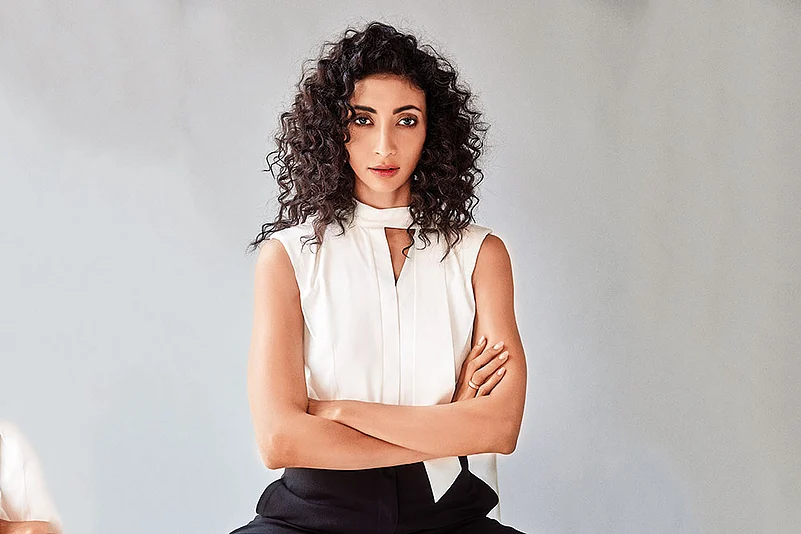
Lakshmi Rana, Model and Founder, Wilderbee Talent Camp
During the pandemic, models suffered massively. Many friends had to leave their rented accommodations, to save on expenses. During that time, I started working on launching my new company, which happened in January with the help of FDCI. My company is India’s first all-inclusive talent camp whose mission is to break the mould of perceived perfection and encourage body positivity and inclusivity vis-à-vis gender and sexual orientation.
The tailored modules focus not only on the skill-set of an aspirant model but also on a full understanding of the business of modelling, communication, personal branding, industry insights, financial management, agency contracts and the international modelling scene. Many students made it to the Fashion Week this year.
Work has picked up, but at a very slow pace and with fewer people. In physical fashion shows there are 20-25 models; in the digital space, for fashion films, there are only three-four models and a small team. I feel there has to be a balance between offline and online fashion shows.
Like everybody else, I have had to struggle. I started at 18, just out of school. I had to adjust too, for I came from a small town. It takes time for the industry to accept you and vice versa. At Miss India 2000, I was a top five finalist and was picked for Fashion Week 2001. There still exists an undercurrent of discrimination—the industry has a fetish for fair-skinned models. There’s also a practice of body shaming; everybody has to be in ‘perfect’ shape. I started off as a size eight. Then designers started going to Milan and Paris and the size dropped to six and four. It was a struggle fitting into clothes. I have seen models being pointed out for having a bigger bust size, hip size and thigh size. I have been fit for long; even post-pregnancy, I got back to work. I have been in the industry for 20 years, and people come up to me saying, “My god you are still modelling”! So, there’s a perception that you ought to retire. I think it is time fashion grew out of all of the small boxes of ageism and obsession with a body type.
(This appeared in the print edition as "Discovery In Disruption")
(As told to Lachmi Deb Roy)
ALSO READ







